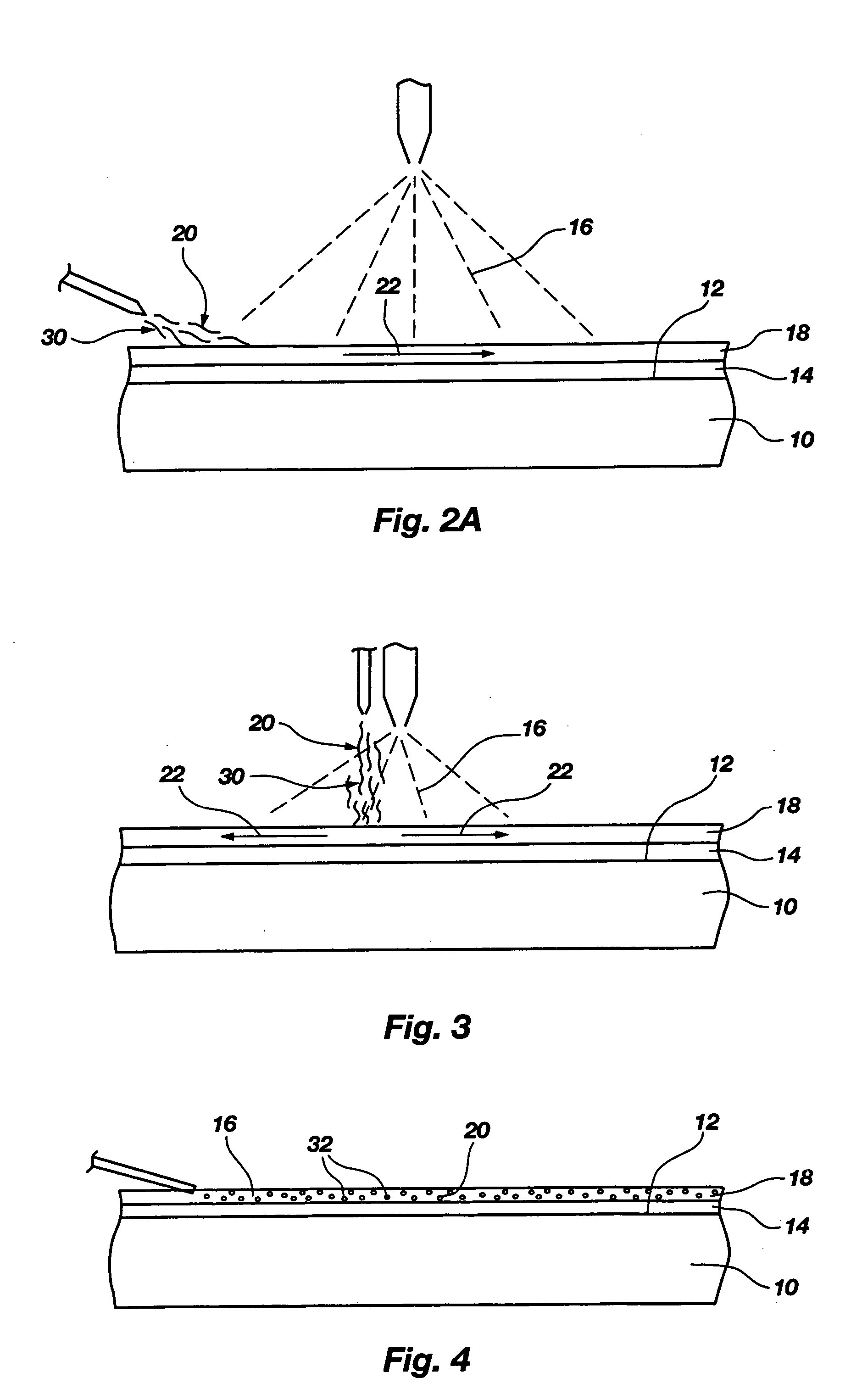Gas assisted method for applying resist stripper and gas-resist stripper combinations
a technology of resist stripper and gas assisted method, which is applied in the direction of photomechanical equipment, instruments, and cleaning using liquids, etc., can solve the problems of ozonated water resist stripper losing its effectiveness, reducing the efficiency of resist stripper, and reducing the rate at which resist stripper removes photoresist from the semiconductor device structure, so as to prevent the stagnation the effect of increasing the rate of resist stripper and preventing the reduction of the ra
- Summary
- Abstract
- Description
- Claims
- Application Information
AI Technical Summary
Benefits of technology
Problems solved by technology
Method used
Image
Examples
Embodiment Construction
[0031]FIG. 1A schematically illustrates a semiconductor device structure 10, in this case a semiconductor wafer, including a photomask 14 over an active surface 12 thereof. Photomask 14 is formed from polymerized, or consolidated, photoresist and may be either soft-baked or hard-baked, as known in the art. Resist stripper 16 preferably includes ozone (e.g., ozonated water), but may be any other type of resist stripper known and used in the art. Resist stripper 16 may be applied to photomask 14 by known processes, such as by spraying resist stripper 16 onto photomask 14, as shown in FIG. 1A. As an alternative, resist stripper 16 may be applied to photomask 14 by at least partially immersing photomask 14 in a quantity of resist stripper 16, as illustrated in FIG. 1B. In any event, resist stripper 16 forms a layer 18 over semiconductor device structure 10 and over any photomask 14 on active surface 12 of semiconductor device structure 10.
[0032] In order to effect the method of the pre...
PUM
| Property | Measurement | Unit |
|---|---|---|
| movement | aaaaa | aaaaa |
| electrically conductive | aaaaa | aaaaa |
| semiconductive | aaaaa | aaaaa |
Abstract
Description
Claims
Application Information
 Login to View More
Login to View More - R&D
- Intellectual Property
- Life Sciences
- Materials
- Tech Scout
- Unparalleled Data Quality
- Higher Quality Content
- 60% Fewer Hallucinations
Browse by: Latest US Patents, China's latest patents, Technical Efficacy Thesaurus, Application Domain, Technology Topic, Popular Technical Reports.
© 2025 PatSnap. All rights reserved.Legal|Privacy policy|Modern Slavery Act Transparency Statement|Sitemap|About US| Contact US: help@patsnap.com



